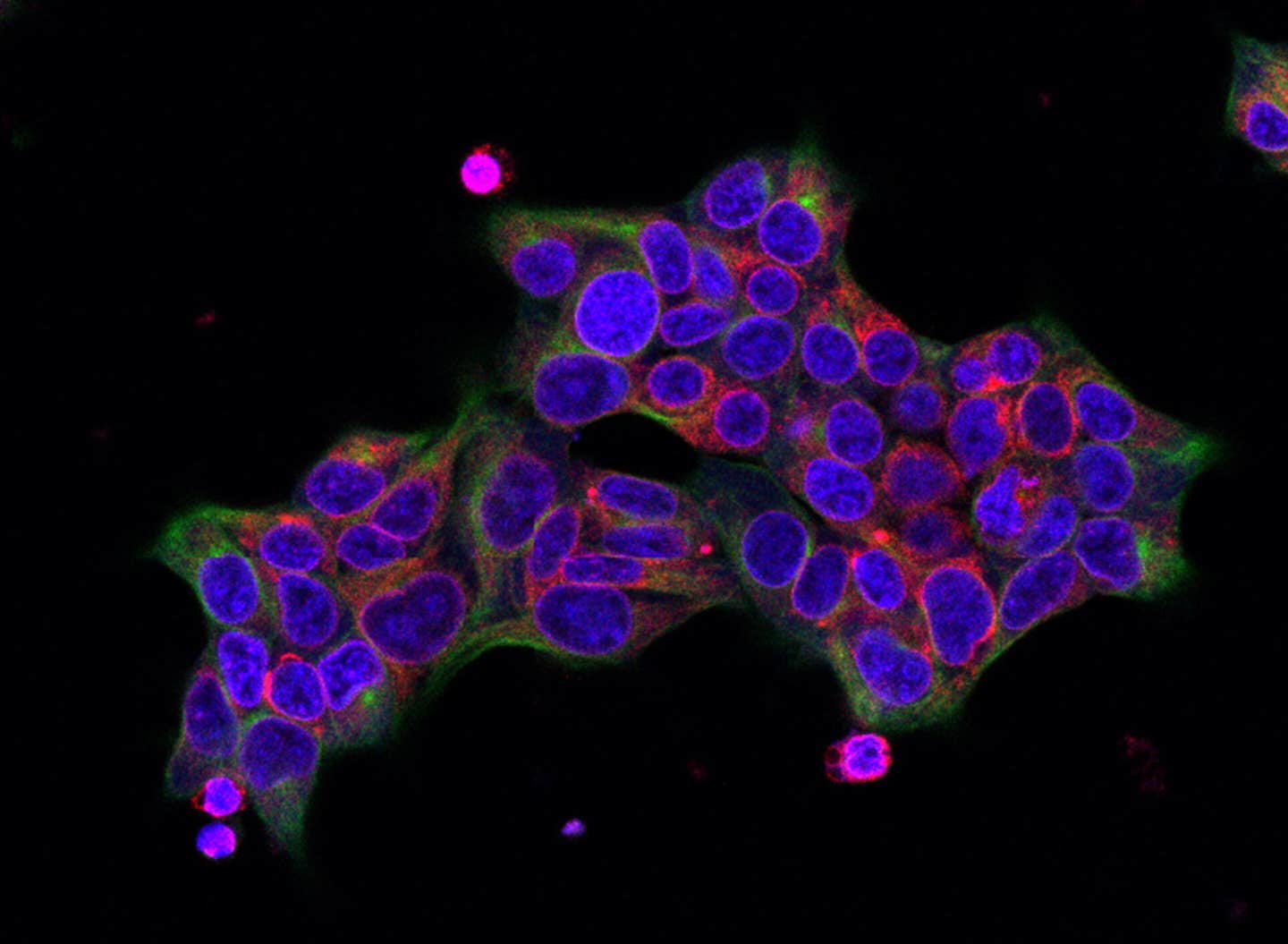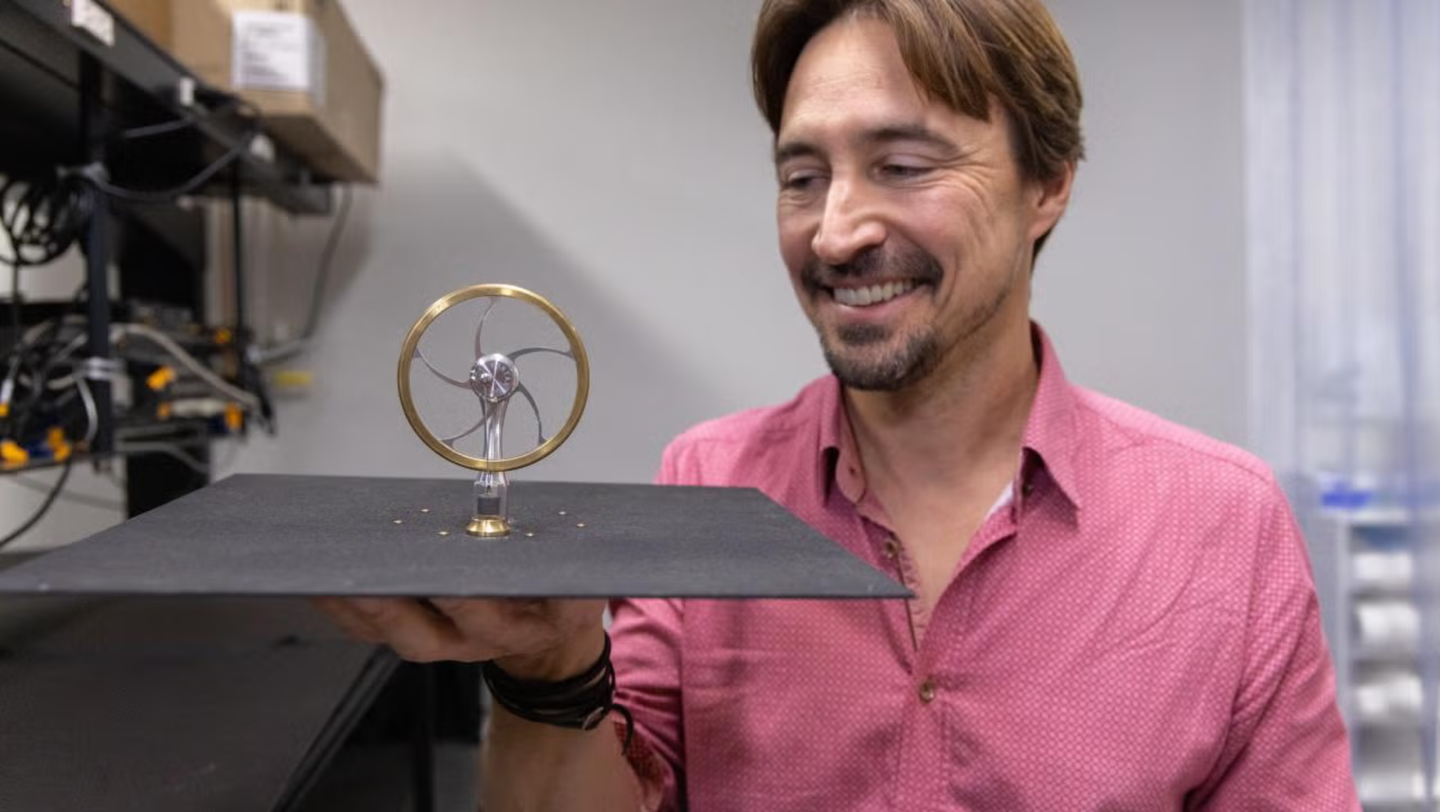Breakthrough treatment reduces heart attack and stroke risk for type 2 diabetics
Scientists link protein to clot risk in type 2 diabetes, paving the way for heart attack and stroke prevention.

SEC61B (red) is overexpressed in a HEK293 cell line (tubulin in green, nuclear staining in blue) for functional assays. (CREDIT: University of Sydney)
A team of scientists from the University of Sydney’s Charles Perkins Centre has discovered a previously unknown biological pathway that could explain why people with type 2 diabetes face a higher risk of dangerous blood clots. The work, published in the Journal of Clinical Investigation, offers new hope for treatments that may one day lower the odds of heart attack and stroke in this group.
Led by Associate Professor Freda Passam from the Central Clinical School and Associate Professor Mark Larance from the School of Medical Sciences, the researchers found that a protein called SEC61B is far more abundant in the platelets of people with type 2 diabetes.
Platelets are the tiny cell fragments in your blood that clump together to stop bleeding, but in diabetes, they often become overactive. SEC61B seems to upset calcium balance inside these cells, making them more prone to form clots.
A Surprising Target for Treatment
When the researchers blocked SEC61B activity using an antibiotic called anisomycin, platelet clumping dropped sharply in both human blood samples and animal models. “People living with type 2 diabetes are vulnerable to increased risk of blood clots,” Passam said. “These exciting findings identify a whole new way to reduce this risk and help prevent life-threatening complications like heart attack and stroke.”
The challenge is urgent. In 2021, nearly 1.2 million Australians were living with type 2 diabetes, with higher rates among Aboriginal and Torres Strait Islander peoples and in rural and regional areas. Cardiovascular disease remains a leading cause of death for these patients, partly because their platelets react more strongly to clotting triggers. That makes traditional blood-thinning drugs less effective.
Related Stories
- Study finds surprising links between regular exercise, your liver and brain health
- New machine learning program accurately predicts who will stick with their exercise program
How SEC61B Works Inside Platelets
Using advanced proteomic techniques, the team studied platelets from people with and without type 2 diabetes, as well as from diabetic mouse models. They discovered that SEC61B acts as a calcium “leak channel” in the platelets’ endoplasmic reticulum—a structure inside cells that helps fold new proteins. Too much calcium escaping into the platelet’s interior makes the cells hyperreactive, raising the risk of clot formation.
The researchers also saw that SEC61B’s role in platelets had never been described before. Normally, this protein is part of a complex that moves newly made proteins into the endoplasmic reticulum for folding. But here, it was helping cause calcium imbalance, triggering the same kind of stress response linked to platelet overactivity in diabetes.
Past Studies and Findings
Earlier research has shown that people with type 2 diabetes have platelets that are more active both at rest and when triggered, which contributes to higher rates of heart attack and stroke. Studies have also linked endoplasmic reticulum stress—caused by the buildup of misfolded proteins—to platelet hyperactivity in diabetes.
The SEC61 protein complex has been studied in other cell types for its role in protein folding and calcium release, but until now, its impact on platelets was unknown.
Other investigations have confirmed that diabetes-related platelet overactivity limits the effectiveness of common anti-clot drugs, creating a need for new targets. Work in mouse models and human cells has also connected calcium imbalances inside platelets with an increased tendency to clot.
Practical Implications of the Research
If drugs can be developed to safely block SEC61B in platelets, people with type 2 diabetes may one day have a new way to protect their hearts and brains from dangerous clots. Such treatments could work alongside—or even replace—current blood thinners that are less effective in these patients.
Beyond diabetes, this discovery may inspire research into clotting disorders in other conditions where platelet hyperactivity plays a role. The findings also add to a growing understanding of how calcium signaling inside cells affects blood clot risk, which could influence drug development across cardiovascular medicine.
While any drug targeting SEC61B is still years away from pharmacy shelves, the researchers believe animal trials could begin within one to two years.
If successful, potential treatments might be available for patients in the next decade. Such medicines could offer a fresh approach for reducing cardiovascular complications in people whose platelets don’t respond well to current anticoagulants.
Note: The article above provided above by The Brighter Side of News.
Like these kind of feel good stories? Get The Brighter Side of News' newsletter.



